| |
  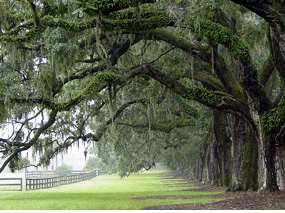 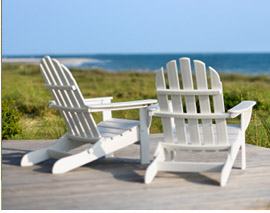 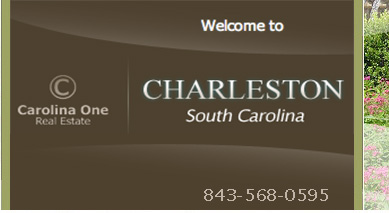
 |
| |
 |
What's Going on in Charleston, SC
Horse-Racing will come back in style
this November 13th, with the 18th running of the
Charleston Cup steeplechase. This popular event has traditionally attracted a
festive crowd, who take great pride in equestrian dress and lavish displays of
food and drink. The morning of the races over 16,000 spectators will enjoy the
excitement as the nation’s top riders, trainers, and owners ready themselves to
compete for for purses totaling $50,000. Gates at historic Stono Ferry will open at 9am for a full day
of races, featuring some of the finest thoroughbreds in the steeplechase
circuit. The excitement of the steeplechase comes from its series of jumps over
barriers, which requires incredible skill and athleticism from both horse and
rider. Sanctioned by the National Steeplechase Association, the Charleston Cup
is a grand throwback to historic days of the South Carolina Jockey Club that
won fame throughout the nation for skillful racing, and the Stono Ferry event
revives the very sociable aspect of the steeplechase, with live music, food,
and a gala atmosphere. Ready to join in on all the fun? For ticket information and gate times, call
843-766-6208, or visit www.charlestoncup.net.
(Original
art by Landis Powers)
|
 |
Featured Charleston Properties
To view more Charleston area listings, please visit Charleston Real Estate |
 |
What's Going on in Charleston, SC
One of the most highly-anticipated events of the year begins Nov. 11th with the 22nd annual Holiday Festival of Lights at James Island County Park. More than 700 stunning displays will be featured in this night-time extravaganza that offers the most creative in lighting ornamentation. Along with the crowd-pleasing light displays, there will be a Santa’s Village area complete with a 50-ton sand display of holiday motifs. The family-friendly event also features children’s train and carousel rides, gingerbread houses and a reindeer workshop. There’s plenty of music and food at Santa’s Sweet Shoppe and the Northpole Diner, complete with s’mores and marshmallow roasting pits.
For information on events and hours, call 843-795-4386 or visit
www.holidayfestivaloflights.com.
Boone Hall Plantation
Christmas provides an enchanting historic backdrop to holiday fun, with the
plantation grounds decked out in grand decorations that hail from Christmas time
long ago. Many of the displays are woven from sweetgrass, cotton and tallow
trees by talented weavers whose ancestors brought joy and hope to the plantation
with a creative use of natural organic materials. For details on plantation
displays and hours, call 843-884-4371 or visit
www.boonehallplantation.com.
The artistic talent of Charleston will be exquisitely demonstrated with the Charleston Fine Art Annual, Nov 2th, 4th, 5th, and 6th in the historic French Quarter and South of Broad district. More than one hundred nationally-known artists will have work on display in sculptures, painting, photography, shaped-glass, jewelry, and other media. The event will kick off on Wednesday, Nov. 2nd at 6pm at the famous Gibbes Museum, with the first in a series of three evening lectures on women’s role in historic art work, in conjunction with the exhibit – Breaking Down Barriers, 300 Years of Women in Art. There will be an artists’ reception before each lecture at 5:30pm for book signings and discussions with the featured artists. Following the Friday evening lecture, an art stroll will begin in throughout the historic district at the dozens of member galleries, and a Painting In the Park display will be offered beginning at 9am Friday morning, featuring skill displays be such respected local artists as West Fraser, Johnson Hagood, Christian Snedeker, Lese Corrigan, and Larry Moore. The festivities include a silent auction, patrons’ receptions and more. For information and tickets, call 843-722-2706.
|
 |
Charleston Indoors -
Charleston Outdoors
One of the often-overlooked historic venues in the Charleston area is among its most famous and most inexpensive – Fort Moultrie on Sullivan’s Island. The historic fort and grounds are part of the Fort Sumter National Monument, and includes great displays and films in its visitors center on Middle Street. The appeal of Fort Moultrie is in its long and varied history. The first fort by that name was built in 1776 to hold back the British invading fleet during the Revolutionary War. Built close to the Charleston harbor entrance and overlooking sand dunes, that structure was washed away by hurricane, replaced and washed away again. The third fort, built in 1809, was a U.S. Army installation where Edgar Allan Poe and William Tecumseh Sherman served, and was most notable for its 1860 commander, Major Robert Anderson abandoning after South Carolina’s secession to seize the newly-built Fort Sumter. Used by the Confederacy during the Civil War, Fort Moultrie was remodeled in the 1890’s for coastal defense during the Spanish American War, and throughout the grounds are giant asphalt fortifications from that era. The visitors center includes films of the unique “disappearing guns” that were featured at the fort until World War II, as well as an account of the slave quarantine station that was the first landing place for many Africans brought to America. The grounds feature free parking, and one of the most complete displays of Civil War cannons in the area – all free to wander as well as a grand view across Charleston Harbor at Fort Sumter and the historic city. For complete information, visit
www.nps.gov/fosu/historyculture/fort_moultrie.htm. |
Charleston Explorer -
Charleston Indoors
On most weekdays, the French Huguenot Church at 44 Queen Street offers a wonderful opportunity to see one of America’s most unusual historic buildings. The 1845 church is designed in the Gothic Revival style, and was the creation of famed Charleston-born architect Edward Brickell White. The beautiful interior is notable for its arched ceiling, kept in place by exterior buttresses that hold the structure in place. The arch in the ceiling matches the arches in the windows, doors, and a series of wooden panels in the vestibule that can be lowered to ventilate the church. All replicate hands clasped in prayer pointing heavenward. The church is bedecked with plaques featuring names of ancestors and relatives from around the world, these commemorative spaces sold in the late 19th century to help keep the church intact during years when its congregation dwindled. Undoubtedly the most fascinating part of the church is its grand Erben pipe organ, built in New York City in 1845, featuring rows of pipes that were once pumped full of air by bellows workers. The organ was so noteworthy that Union soldiers coveted it as a trophy after the Civil War, and were in the process of disassembling it and carrying it down to city wharves to ship north, when members of the congregation pleaded with them to give it back. Amazingly, it was given back, and works beautifully today for services, weddings and musical events. |
 |
Charleston
Architecture -
The name Circular Congregational Church usually evokes questions as to the origin of this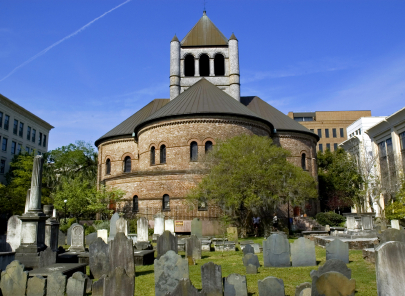 unusual Meeting Street structure, which, like so many houses of worship in Charleston, stands on the ashes of its predecessor. Members of dissenting Protestant sects first built their Meeting House at the location in the late 1600’s, and it its from that name the street is known. Remodeled in the 1730’s that original structure was replaced by the grand design of Charleston architect Robert Mills in 1804. Mills was fascinated by the challenge of the rotunda, and created the second largest domed space in America after the Capitol building in Washington. Mills’ domed church was adorned with a 190-foot steeple in 1838, designed in the Wren style by the Charleston architect Charles Reichardt, and a columned Greek portico designed by local architects Francis Jones and Stephen Lee. The combination of styles and structures made the church among the most notable sights in the city, but was lost in the fire of 1861. The shell of the burned church stood until the earthquake of 1886, when it collapsed, and the bricks were shaped into the current circular-style dome in 1892. The style is Richardson Revival, a Victorian look meant to imitate the buildings of southern France and Spain. unusual Meeting Street structure, which, like so many houses of worship in Charleston, stands on the ashes of its predecessor. Members of dissenting Protestant sects first built their Meeting House at the location in the late 1600’s, and it its from that name the street is known. Remodeled in the 1730’s that original structure was replaced by the grand design of Charleston architect Robert Mills in 1804. Mills was fascinated by the challenge of the rotunda, and created the second largest domed space in America after the Capitol building in Washington. Mills’ domed church was adorned with a 190-foot steeple in 1838, designed in the Wren style by the Charleston architect Charles Reichardt, and a columned Greek portico designed by local architects Francis Jones and Stephen Lee. The combination of styles and structures made the church among the most notable sights in the city, but was lost in the fire of 1861. The shell of the burned church stood until the earthquake of 1886, when it collapsed, and the bricks were shaped into the current circular-style dome in 1892. The style is Richardson Revival, a Victorian look meant to imitate the buildings of southern France and Spain.
|
 |
Bet
You Did Not Know -
The picturesque clay tile roof tops of Charleston are more than just for aesthetic pleasure, they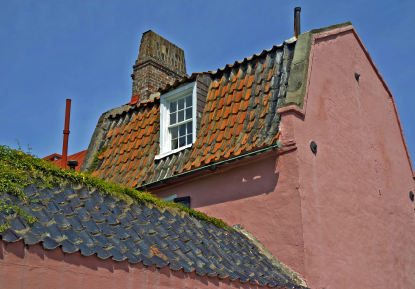 actually have a thermal quality that helps keep houses cool, as well as proving a fire retardant. Charlestonians learned the hard way in the early colonial period, that fire often spread from above, as flaming embers pushed by sea breezes landed on roof tops that were commonly made of wooden cedar shingles. To prevent fires from burning roofs, the roofs needed to be made of a non-combustible material, and local clays were ideal for shaping and baking into tiles. The most popular shape was the cap and pan tile, with shapes curved in an upward arch(cap) and downward arch(pan) interlocked to form an undulating surface across the roof. This uneven surface kept the sun from beating down as directly on the roof, and also provided a passage of air through the arches for more circulation. Mainly clay tile roofs were covered with tar as a seal against rain, but many others still feature a bright orange color gleaming from the tops of Charleston houses. actually have a thermal quality that helps keep houses cool, as well as proving a fire retardant. Charlestonians learned the hard way in the early colonial period, that fire often spread from above, as flaming embers pushed by sea breezes landed on roof tops that were commonly made of wooden cedar shingles. To prevent fires from burning roofs, the roofs needed to be made of a non-combustible material, and local clays were ideal for shaping and baking into tiles. The most popular shape was the cap and pan tile, with shapes curved in an upward arch(cap) and downward arch(pan) interlocked to form an undulating surface across the roof. This uneven surface kept the sun from beating down as directly on the roof, and also provided a passage of air through the arches for more circulation. Mainly clay tile roofs were covered with tar as a seal against rain, but many others still feature a bright orange color gleaming from the tops of Charleston houses.
|
 |
Charleston
Market Report -
CHARLESTON, SC—(June 10, 2011)
According to preliminary data released by the Charleston Trident Association of
REALTORS® (CTAR) 804 homes sold at a median price of $179,945 in May, which
reflects 8% less buying activity and a 4% reduction in median price when
compared to May 2010, when 878 homes sold at a median price of $186,497, as
buyers were responding to the appeal of the homebuyer tax credit.
Sales volume grew by 4% and median price increased by 3% from April to May.
"We anticipate declines in year-over-year sales volume through the third quarter
of this year. The data we’re analyzing thus far in 2011 reflects activity in a
non-incentivized market, so it’s difficult to draw meaningful comparisons over
last year’s figures” said 2011 CTAR President Rob Woodul. |
|
|
|
 | |
| |
|


